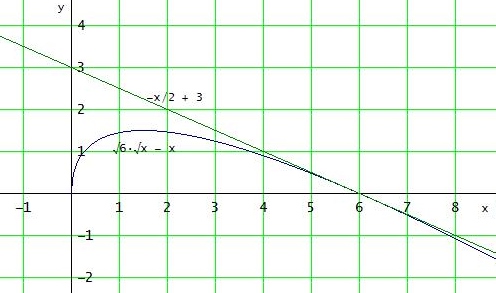fa(x) = a · √x - x mit a>0
a)
positive Nullstelle:
fa(x) = a · √x - x = 0 ⇔ √x · (a - √x) = 0 ⇔ x = 0 oder x = a2
fa'(x) = a / (2·√x) - 1 → fa'(a2) = -1/2
Tangente in der positiven Nullstelle: t(x) = -1/2 · ( x - a2 ) = -1/2 x + 1/2 a2
schneidet die y-Achse in (0|3) für a = √6
→ f(x) = √6·√x - x mit Tangente t(x) = -1/2 x + 3

b)
Fläche = \( \int\limits_{0}^{a^2} (a·\sqrt{x}-x)\text{ }dx \) = [ 2/3 a · x3/2 - 1/2 x2 ]0a^2
= a^4/6 = 216 → a = 6
Gruß Wolfgang